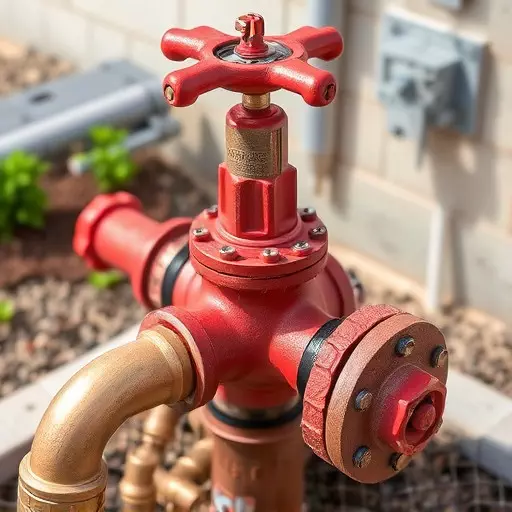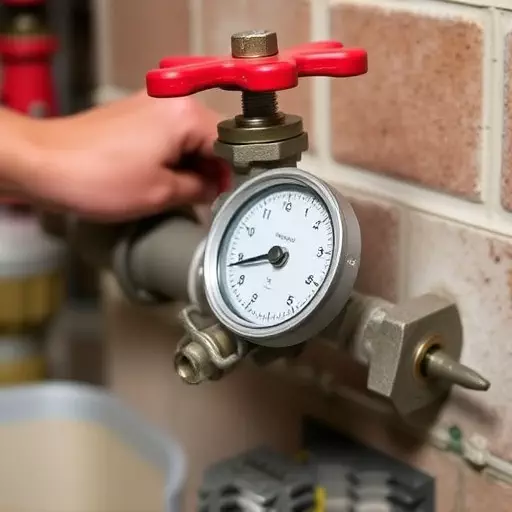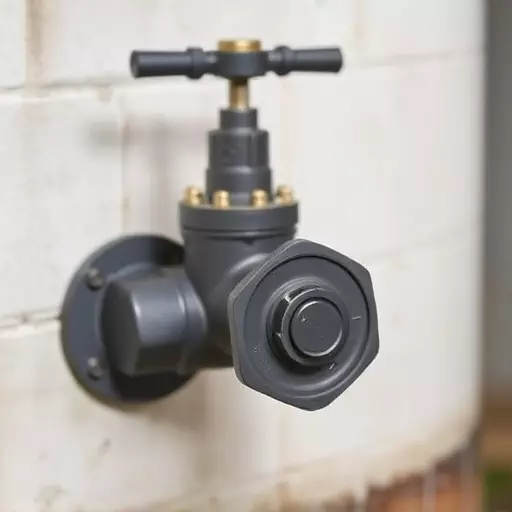Backflow preventers are crucial for protecting public health in Spring Lake by stopping contaminated water from entering the main supply. Annual testing and inspections, required by law, ensure these devices function optimally, meeting local regulations and mitigating risks to potable water. Commercial property owners play a vital role by adhering to regular testing, fostering community safety and maintaining high-quality water. This process involves comprehensive system checks, maintenance, and documentation, ensuring the reliability of backflow preventers and the overall safety of Spring Lake's water network.
“Irrigation systems are vital for agricultural productivity and landscape beauty, but they pose potential water safety risks through backflow contamination. Understanding backflow preventers (BFP) is crucial for maintaining water quality in Spring Lake and surrounding areas. This article guides you through the essential aspects of BFPs: their role in water safety, annual testing as a legal mandate, commercial inspection processes, identifying hazards, testing methods, record-keeping, and the significant impact of proper BP maintenance on local water sources.”
- Understanding Backflow Preventers: Their Role in Water Safety
- Annual Backflow Testing: A Legal Mandate and Safety Measure
- Commercial Irrigation Systems: Inspection Process and Best Practices
- Identifying Potential Hazards: Common Causes of Backflow
- Backflow Testing Methods and Equipment: Ensuring Accurate Results
- Record-Keeping and Documentation for Efficient Compliance
- The Impact of Proper Backflow Prevention on Water Quality
Understanding Backflow Preventers: Their Role in Water Safety

Backflow preventers play a pivotal role in maintaining water safety, especially in irrigation systems. These devices are designed to stop the backflow of contaminated water from entering the main water supply. In Spring Lake and other areas, annual backflow preventer testing is not just a regulatory requirement but also a crucial step in safeguarding public health. During these tests, professionals inspect commercial backflow preventers to ensure they function correctly, preventing any potential harm caused by polluted water flowing backward into the potable water system.
Regular backflow preventer testing, often done as part of an annual backflow preventer inspection, is essential. It helps identify any defects or issues with these critical safety mechanisms. This process involves rigorous checks to confirm that the backflow preventers are in optimal working condition and can effectively isolate contaminated water from the main supply. By adhering to this practice, Spring Lake’s commercial property owners contribute to maintaining a robust water safety network.
Annual Backflow Testing: A Legal Mandate and Safety Measure

In many jurisdictions, including the areas surrounding Spring Lake, annual backflow preventer testing is a legal requirement for all irrigation systems. This mandated practice serves two primary purposes: ensuring compliance with local regulations and safeguarding against potential hazards. Backflow preventers are critical safety mechanisms designed to stop contaminated water from flowing back into potable water supplies. Regular testing helps verify their integrity and effectiveness, identifying any defects or malfunctions that could compromise the system.
Annual inspections by certified professionals are essential for commercial backflow preventer maintenance as well. This proactive approach not only protects the quality of local water sources but also prevents costly emergencies and potential health risks associated with contaminated water. By adhering to these regulations, property owners and managers contribute to the overall safety and sustainability of their communities.
Commercial Irrigation Systems: Inspection Process and Best Practices

Commercial Irrigation systems require meticulous care and regular maintenance to ensure water efficiency and safety. One critical aspect is the annual backflow preventer testing in Spring Lake, which is essential for preventing contaminated water from flowing back into the main supply. This process involves a thorough inspection of the entire irrigation system to identify potential vulnerabilities and ensure the integrity of the backflow preventers.
During the commercial backflow preventer inspection, professionals check the condition of the devices, examining their proper functioning and setting. They also assess the surrounding infrastructure for any signs of damage or corrosion that could compromise the system’s effectiveness. Best practices recommend staying up-to-date with manufacturer guidelines and local regulations to guarantee a comprehensive evaluation. Regular maintenance and timely repairs create a robust defense against backflow events, safeguarding both the quality of Spring Lake’s water supply and the integrity of commercial irrigation systems.
Identifying Potential Hazards: Common Causes of Backflow

Identifying Potential Hazards: Common Causes of Backflow
In Spring Lake and surrounding areas, regular backflow preventer testing is paramount for maintaining safe water systems. Understanding potential hazards is crucial in this process. The primary concern revolves around backflow, which can occur when contaminated water flows back into the main supply, posing significant health risks. Common causes include faulty or improperly installed backflow preventers, worn-out pipes, and cross-connections between potable and non-potable water sources. These issues can lead to the introduction of harmful substances like bacteria, chemicals, or even sewage into the drinking water supply.
Annual backflow preventer testing plays a vital role in identifying these problems early on. Commercial backflow preventer inspections are recommended for all businesses and properties to ensure compliance with local regulations. By addressing potential hazards proactively, homeowners and business owners can protect their water systems and the health of those who depend on them.
Backflow Testing Methods and Equipment: Ensuring Accurate Results

Record-Keeping and Documentation for Efficient Compliance

Efficient irrigation system maintenance relies heavily on meticulous record-keeping and comprehensive documentation. When it comes to backflow prevention, regular testing and inspection are non-negotiable for both commercial and residential properties in Spring Lake. Annual backflow preventer testing is not only a regulatory requirement but also a proactive measure to safeguard water quality. This involves rigorous evaluation of backflow devices, including detection of any leaks or potential hazards that could compromise the integrity of the irrigation system.
Proper documentation during these tests is crucial for ongoing compliance. Detailed records of test results, maintenance activities, and inspections should be meticulously documented and easily accessible. This not only facilitates consistent monitoring but also enables quick identification and resolution of issues. By maintaining comprehensive files, property owners and managers can ensure that their irrigation systems operate safely and efficiently throughout the year, meeting all necessary regulations for backflow prevention in Spring Lake.
The Impact of Proper Backflow Prevention on Water Quality

Proper backflow prevention is paramount for maintaining water quality in Spring Lake and surrounding areas. Backflow occur when contaminated water flows back into the main supply, posing potential health risks. A well-maintained backflow preventer, such as those inspected annually during commercial backflow preventer testing, acts as a crucial barrier against this. By blocking reversed flow, these devices ensure that any unwanted substances, like chemicals or bacteria from irrigation systems, do not enter the potable water supply.
Annual backflow preventer testing is essential in identifying potential vulnerabilities and ensuring these safety mechanisms function optimally. During these inspections, professionals verify the integrity of the preventer, check for leaks, and confirm its ability to stop backflow at various pressure levels. This proactive approach to commercial backflow preventer inspection not only safeguards water quality but also complies with local regulations, ultimately contributing to a healthier and safer environment for Spring Lake residents and businesses.


